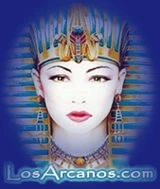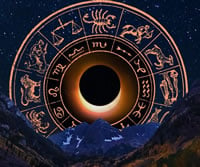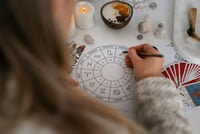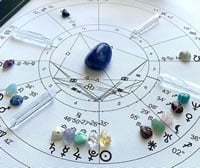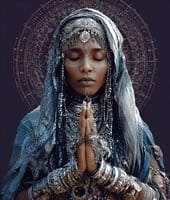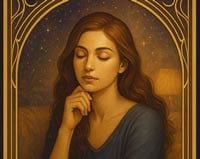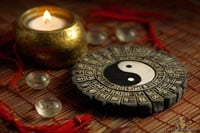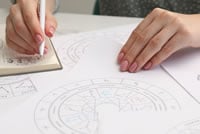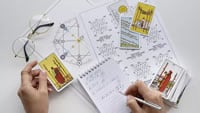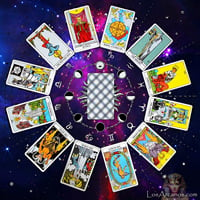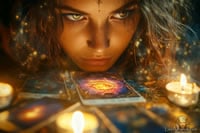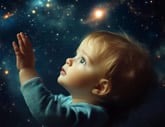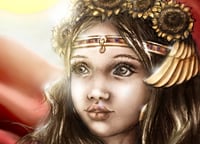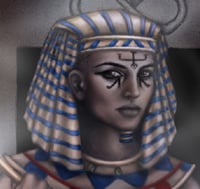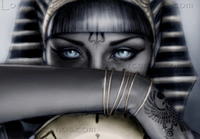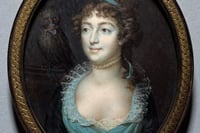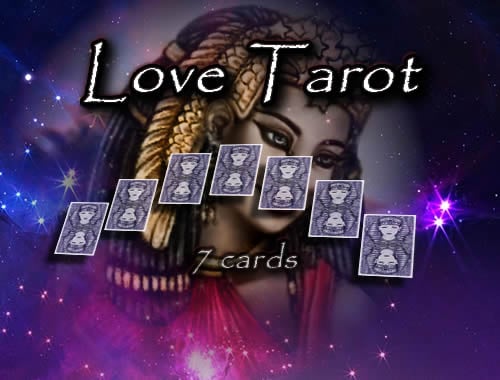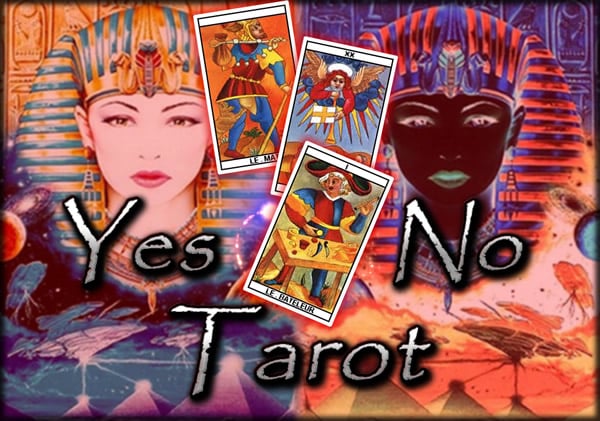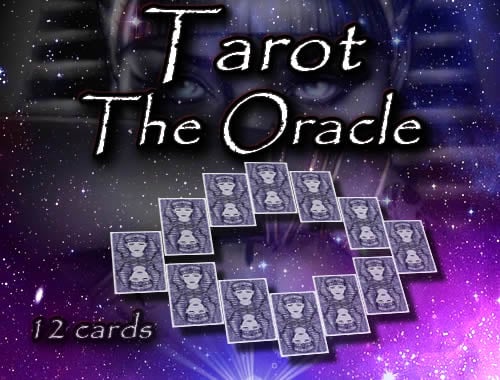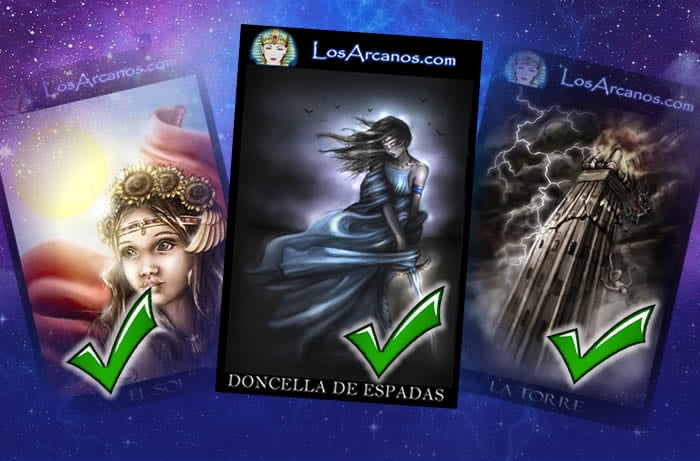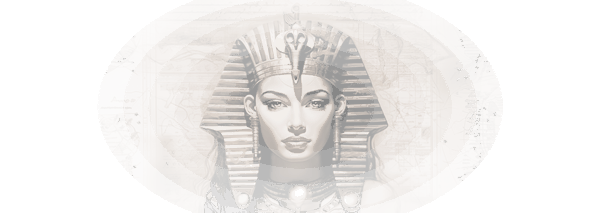
How to Read Tarot Cards: A Beginner’s Guide to Understanding Their Meanings
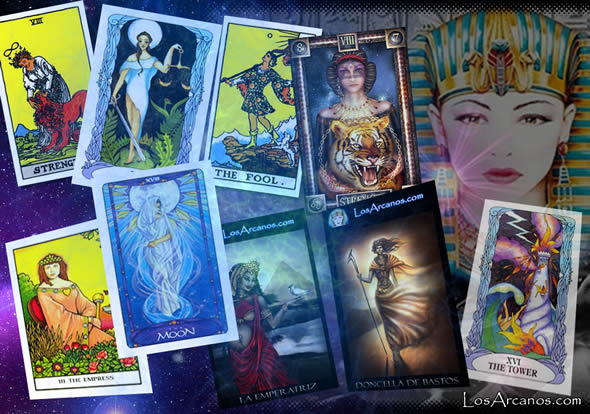
Tarot is one of the most popular divination practices, and though occultists have been drawing the allegorical cards for centuries, illustrated decks are now popping up all over. The intrinsic aestheticism of this ancient art has revitalized interest in tarot, and after seeing so many tarot readings over on TikTok, perhaps you’re ready to start your own practice.
Despite its ubiquity, though, the art can still seem elusive and confusing. What exactly is tarot? What do the cards mean and how are they used? Don’t fret: The fundamentals are easy to understand. Here’s what every beginner should know about the history of tarot, as well as tips and tricks for kick-starting your unique practice.
Where does tarot come from?
Surprisingly, it is a relatively modern craft. Though tarot decks date back to the 1400s, pictorial cards were originally used for games rather than prediction. Cartomancy, or fortune-telling through the use of playing cards, actually wasn’t developed until 1785, when French occultist Jean-Baptiste Alliette — known by his pseudonym, Etteilla, the inversion of his surname — created comprehensive links between illustrated cards, astrology, and ancient Egyptian lore.
Over the next century, mystics and philosophers continued to expand the role of tarot. In the late 1890s, several London-based occultists formed the Hermetic Order of the Golden Dawn, one of the groups responsible for the modern magical revival. Two of the group’s founders, husband and wife MacGregor and Moina Maters, wrote a manual that detailed tarot’s symbolic power, entitled Book T.
In 1909, Arthur Edward Waite and Pamela Colman Smith designed and published a tarot deck loosely based on the teachings of the Hermetic Order of the Golden Dawn. This timeless deck is commonly known as the Rider-Waite deck and is still the most popular tarot variant for both beginner and professional card readers. In 1943, occultist Aleister Crowley (the self-declared nemesis of Arthur Edward Waite) and Lady Frieda Harris published their own interpretation of the Hermetic Order of the Golden Dawn’s tarot. Their Thoth deck, named after the Egyptian god of alphabets, incorporates specific astrological symbolism into each card, linking the divination practice to the cosmos.
What’s the difference between the Major Arcana and the Minor Arcana cards?
Let’s talk about the structure of the deck and the meanings of its cards. Any magical practice — tarot, astrology, or spell work — is based on the Hermetic axiom “as above, so below.” In other words, the macrocosm of the cosmos is reflected in the microcosm of individual experience. Accordingly, the entire universe exists within a tarot deck, with each card representing a person, place, or event. These symbols are depicted in both the Major Arcana cards, which speak to greater secrets, and the Minor Arcana cards, which speak to lesser secrets.
The Major Arcana cards represent monumental, groundbreaking influences. They punctuate our journeys and each stands alone as a powerful message, representing life-changing motions that define the beginnings or ends of cycles. These dynamic cards appear during major transitions, signaling distinctive moments of transformation. The cards are numbered to represent stations within our greater journey through life; their chronological order reveals the passing of time.
The Minor Arcana cards, on the other hand, reflect everyday matters. These cards showcase ordinary people engaging in mundane activities, such as dancing, drinking, sleeping, or quarreling. They suggest action that is triggered by human behaviors and appear during gentle transitions that may be temporary or have only minor influence.
How many tarot cards are there?
The Minor Arcana cards are broken up into four suits, each containing ten numbered cards and four court cards. In the Minor Arcana, the card’s number reveals the stage of an event: The ace card represents the beginning, while the 10 symbolizes the end. Similarly, the progression of the court cards demonstrates our understanding of circumstances on an individual level, representing either personality types or actual people. The Page (or Princess, in some decks), Knight, Queen, and King interpret circumstances with increasing levels of understanding and wisdom.
The suits (Wands, Pentacles, Swords, and Cups) correspond to their own unique areas of life and astrological elements. Wands symbolize passion and inspiration (corresponding with the fire element), Pentacles represent money and physical realities (corresponding with the earth element), Swords depict intellectual intrigues (corresponding with the air element), and Cups illustrate emotional matters (corresponding with the water element). These suits reveal which spheres of influence are being activated, offering guidance on how to best manage any circumstances at hand.
How can I get started reading the cards?
Together, the Major and Minor Arcana cards create a comprehensive pictorial language. It is important to remember that all the answers we seek exist innately within the deck, with each card illustrating a person, circumstance, or potential outcome. Since there are no secret puzzles or hidden agendas with tarot, the ability to discern meaning lies within your own narrative interpretation.
Before any reading, be sure to shuffle (or “clear”) the deck. This deliberate gesture should become a meditation. Feel the physicality of the cards in your hand, visualizing your question. If you’re reading for another person, use this reflective moment to get to the root of their situation and help you formulate specific queries for them. Take as long as you need. Clearing the deck is a critical first step in reading tarot cards, as it opens the pathway between spiritual dimensions. Whenever you’re ready, cut the cards into three and reorder the pile, face down. On your favorite cloth (be precious with your tarot deck), prepare to pull cards for your tarot “spread.”
What are the different tarot card spreads?
The “three-card spread” is one of the most simple and effective tarot spreads. You can adjust the categories to accommodate any situation (past, present, future; yourself, the other person, the relationship; opportunities, challenges, outcomes; mind, body, spirit). The cards and their corresponding positions will effortlessly expose bonds and dynamics. But before reading the straightforward explanation of each card, take a moment to create your own story based on observation. How do the cards you drew make you feel? What are the colors and symbols? If there are characters, are they facing towards or away from each other? Do the illustrations seem cohesive or disjointed?
Of course, there are many tarot card spreads beyond the three-card pull. Professional tarot card readers often opt for the “Celtic cross spread,” which uses 10 cards, and as the name suggests, resembles the shape of a Celtic cross. The 10-card spread allows you to look at not only the past, present, and future, but the challenges, outside influences, and even outcomes.
For beginners (though honestly, even seasoned tarot readers do this), a one-card-a-day pull will suffice at first to get you used to the practice. This method involves picking a time of day (usually in the morning) and simply asking the cards, “What do I need to know today?” or “How should I focus my energy today?” This method is efficient, easy to keep up with, and also a great way to learn the cards.
Though each card has classic associations, the most powerful resource available is your intuition. Note your immediate emotional reaction: Your instincts will inform your study and strengthen your pictorial memory. Eventually, you’ll develop your own systems and patterns, and individual cards will carry meanings specific to you. Perhaps the Devil card will come to represent an ex-lover, while the Two of Wands will symbolize a new job. Your distinctive lexicon will inform your readings, allowing you to create specific narratives that can be applied to any circumstance or situation.
How do I choose a deck?
There is no shortage of stunning, dynamic tarot decks. Since the mid-twentieth century, hundreds — if not thousands — of beautiful decks have been published. The Tarot de Marseille deck is an elegant reproduction of a classic French deck; the Motherpeace deck perfectly captures the ethereal spirit of the 1970s; the Black Power deck spotlights famous Black luminaries.
Some tarot readers believe that your first deck should be gifted to you. While everyone loves presents, there is nothing more valuable than rewarding yourself with the magic of divination, so I say you should relish the opportunity to choose your first deck. With so many enchanting options available, the most important variable is your unique connection to the cards.
Where can I buy tarot cards?
Whether you are shopping online or in-person, observe your emotions as you browse different tarot decks. Does the one you’re considering make you feel excited? Wary? Confused? Trust your intuition: Your careful consideration will ultimately guide your interpretation of the cards. Explore the imagery: Are you enchanted by classical or modern representations? Note the symbols: Are they enticing? Remember, there is no hierarchy of tarot decks, so be sure to choose whichever deck truly tantalizes your soul.
The Rider-Waite Tarot Deck
The Rider-Waite Tarot Deck is a wonderful first deck because so many future decks are based on its iconic illustrations. Also, helpful tarot books, such as 78 Degrees of Wisdom use the deck as a reference. Start with the Rider-Waite deck, and then expand your collection with decks that resonate with you. It’s available online but, of course, feel free to check out your local occult store and see what speaks to you in person.
The Marseille Tarot Deck
For occult history buffs or anyone who enjoys gorgeous French art, try the Marseille Tarot Professional Edition. As it is one of the most influential and beautiful decks out there, the Marseille Tarot is especially useful as a gift, as it’s a great deck to graduate to after you learn the Rider-Waite. Don’t be surprised if you see a pro pull this one out at a professional reading.
Don’t forget, cosmic warriors, tarot provides a rich vocabulary, but it is ultimately akin to a powerful coin toss: We can energetically charge any item or action through the strength of our own spirit. Though tarot requires time, practice, and patience, we intrinsically possess all the skills necessary to produce honest and accurate divinations. At the core of tarot is passion, logic, curiosity, and intuition — characteristics that define both the illuminated cards and their mystical readers.
refreshBack to Articles
Related Posts
latest articles
Love Tarot reading will help you find true love. You will be able to analyze in a better way any problems you face with your partner.
Free one card Tarot reading Yes or No, Tarot reading YES or NO is a spread that answers concrete and precise questions. The YES or NO Tarot reading, can easily remove your doubts...
One of the most enriching readings and for free. It provides specific advice on each subject: love, health, work, trips, business, relationships, money and so forth. Get it now
Select which Tarot card the following description corresponds to
